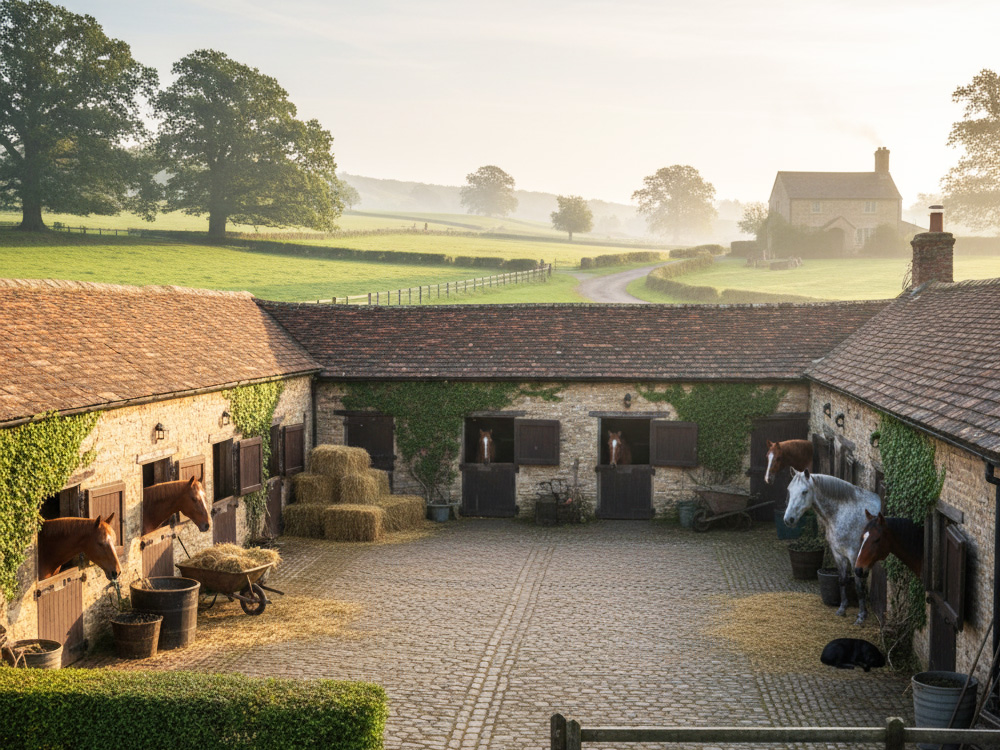Equestrian buildings (including stables and livery yards) do not full under Class Q permitted development rights in England. Class Q applies to buildings used solely for agricultural purposes as part of an established agricultural unit; stabling horses is typically an equestrian use rather than agriculture, so it falls outside the scope. Proposals to include equestrian buildings in the 2024 Class Q reforms were not taken forward.
What changed in Class Q relating to planning permission for stables?
Significant updates to permitted development rights took effect on 21 May 2024, with a transition period that ended on 20 May 2025. The reforms broadened and clarified Class Q for agricultural buildings, meaning capacity limits were raised, and making prior approvals more workable. However, Class Q changes did not open the door to stables being converted into residential properties being included.
Key points:
- More homes and more floor space: Up to 10 dwellings can now be created on a single agricultural unit, with a total convertible floorspace up to 1,000 m² (subject to conditions and design limits).
- Policy purpose: Government framed the changes as a way to give farmers more flexibility and bring redundant farm buildings back into productive use.
- Transitional arrangements: Applications after 20 May 2025 must meet the new regime in full.
Why stables don’t qualify for Class Q rules
Class Q is rooted in the Town and Country Planning (General Permitted Development) (England) Order, allowing change of use from agricultural buildings to dwellings via prior approval. The gateway test is whether the building was used solely for agriculture as part of an established agricultural unit on the relevant qualifying date. Equestrian uses (stables, riding schools, livery) are generally not agriculture, so they don’t meet the threshold.
Legal and practitioner guidance confirms that equestrian buildings including stables do not benefit from Class Q conversion to residential.
Mixed-use histories also cause problems. Where there’s a blend of equestrian and agricultural activity, inspectors have found that the presence of equestrian use can scupper Class Q rights entirely. Evidence of mixed equestrian/agricultural use has led to refusals being upheld at appeal.
Are there any workarounds for stables?
If your building is a stable or livery, you’re typically looking at full planning permission, not Class Q. Depending on location and context, other permitted development routes may help – for example, the 2024 reforms to Class R (non-residential to commercial uses on farms) widened rural diversification options – but that’s a different regime and still doesn’t convert stables to homes. For more information, read our guide to permitted development on agricultural land.
Practical checklist (England)
- Prove agricultural-only use: If you think a stable block was genuinely used for agriculture (rare), you’ll need robust, dated evidence. Any equestrian activity weakens the Class Q case. If you succeed, you might enjoy this guide to maximising the value of agricultural land.
- Measure the numbers: Even for eligible farm buildings, you must fit within the new 10-unit / 1,000 m² envelope and satisfy design/technical limits under prior approval.
- Mind the constraints: Protected landscapes and designations still restrict Class Q. Local policies and site constraints (highways, contamination, noise, design) remain key to prior approval.
- Consider alternatives: For stables, prepare a full planning strategy (need, design quality, landscape impact, fallback positions) or explore non-residential diversification under other PD rights.
How Intelligent Land turns policy into value
At Intelligent Land, we’ve built the Land Value Accelerator™ (LVA Method™) to turn complex rules like Class Q on stables into measurable uplift:
- Review Planning Permissions – We verify eligibility and hazards (use history, appeal risk, constraints).
- Undertake Research – Technical, legal, BNG/ESG and market checks to shape the most bankable route.
- Scenario Testing – Our AI runs alternative schemes (Class Q vs. full planning, phasing, unit mix) to pinpoint the optimum outcome – often identifying £1m+ value uplift within 24 hours in many cases.
- Perceived value is real value: even where stables can’t use Class Q, reframing the site with the right narrative – design quality, sustainability gains, and a credible fallback – can unlock planning confidence and investor appetite. That’s the difference between a stuck asset and a performing one.
Bottom line
- Do stables fall under Class Q? No. Equestrian buildings are not covered, and the 2024 reforms didn’t change that.
- What did change? Class Q is now more flexible for agricultural buildings, allowing more homes and greater floorspace – within clear limits.
What next? If you’re holding stables or mixed equestrian/agricultural stock, you’ll likely need a full planning route, with a strategy that stacks on policy, design and value.
Land Value Accelerator™ – Unlocking Hidden Millions.
Ready to see what your site could really be worth? Book an LVA Method™ review and we’ll map the fastest route from “policy puzzle” to bankable uplift.





